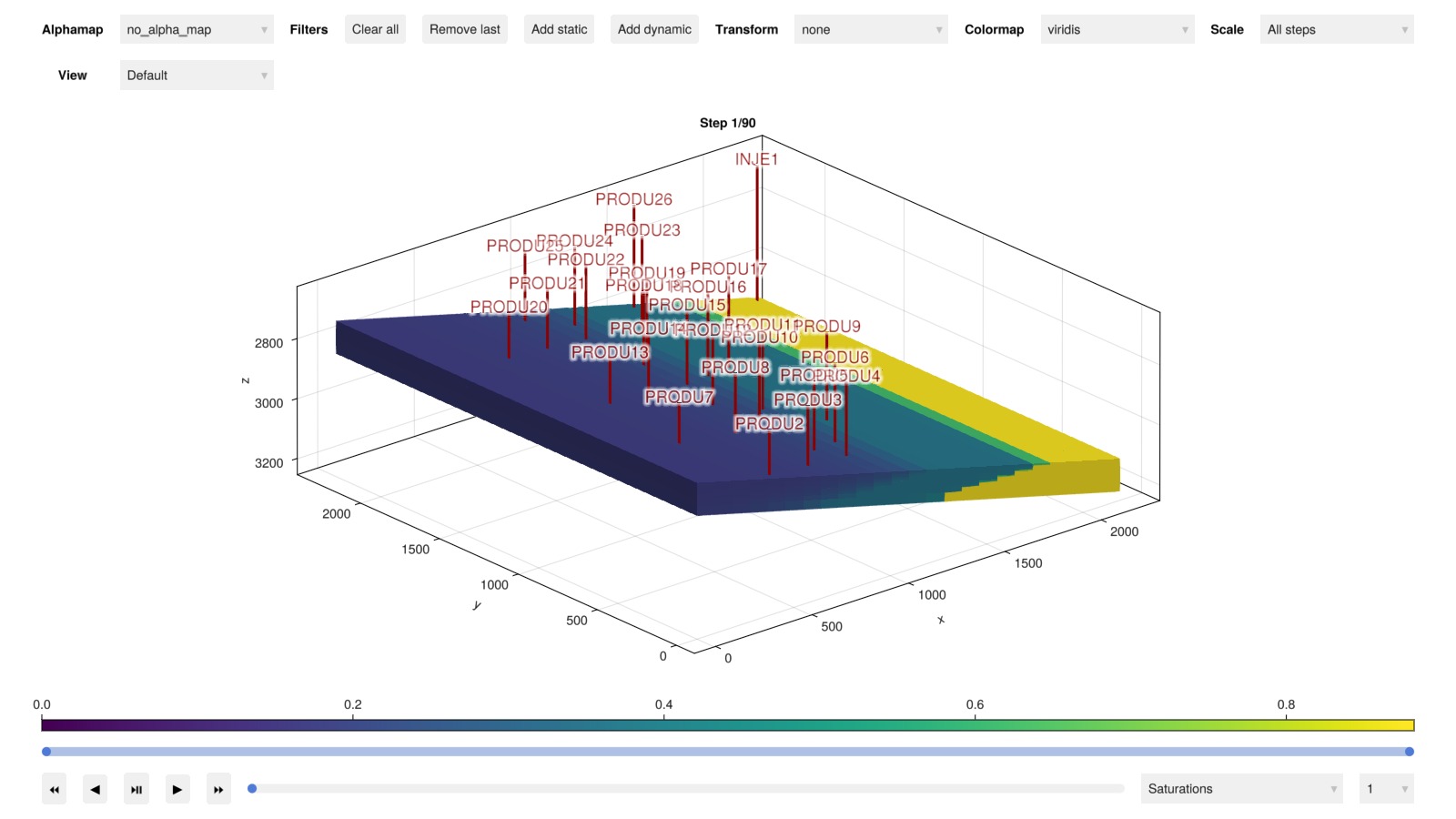Physical systems
Immiscible, compositional, geothermal and black-oil flow
Re-thinking reservoir simulation in Julia
High-performance porous media and reservoir simulator based on automatic differentiation

JutulDarcy.jl is a general high-performance purpose porous media simulator toolbox (CO2 sequestration, gas/H2 storage, oil/gas fields) written in Julia based on Jutul.jl, developed by the Applied Computational Science group at SINTEF Digital.
A few highlights:
Immiscible, black-oil, compositional, CO2-brine and geothermal systems
Fully differentiable through adjoint method
High performance, with optional support for compiling MPI parallel binaries
Consistent discretizations
Industry standard input formats - or make your own model as a script
3D visualization and tools for post-processing of simulation results
Getting started is the main setup guide that includes the basics of installing Julia and creating a Julia environment for JutulDarcy.jl, written for users who may not already be familiar with Julia package management.
If you want to get started quickly: Install Julia and add the following packages together with a Makie backend library to your environment of choice using Julia's package manager Pkg:
using Pkg
Pkg.add("GLMakie") # Plotting
Pkg.add("Jutul") # Base package
Pkg.add("JutulDarcy") # Reservoir simulatorTo verify that everything is working, we have a minimal example that runs a industry standard input file and produces interactive plots. Note that interactive plotting requires GLMakie, which may not work if you are running Julia over SSH.
using JutulDarcy, GLMakie
spe9_dir = JutulDarcy.GeoEnergyIO.test_input_file_path("SPE9")
file_path = joinpath(spe9_dir, "SPE9.DATA")
case = setup_case_from_data_file(file_path)
result = simulate_reservoir(case)
plot_reservoir_simulation_result(case.model, result)
To get access to all the examples, you can generate a folder that contains the examples locally, you can run the following code to create a folder jutuldarcy_examples in your current working directory:
using JutulDarcy
generate_jutuldarcy_examples()These examples can then be run using include("jutuldarcy_examples/example_name.jl") or opened in an editor to be run line by line. Alternatively, you can download all examples as Jupyter Notebooks.
If you use JutulDarcy for a scientific publication, please cite the main paper the following way:
O. Møyner, (2024). JutulDarcy.jl - a Fully Differentiable High-Performance Reservoir Simulator Based on Automatic Differentiation. ECMOR 2024, https://doi.org/10.3997/2214-4609.202437111
@article{jutuldarcy_ecmor_2024,
author = "M{\o}yner, O.",
title = "JutulDarcy.jl - a Fully Differentiable High-Performance Reservoir Simulator Based on Automatic Differentiation",
year = "2024",
volume = "2024",
number = "1",
pages = "1-9",
doi = "https://doi.org/10.3997/2214-4609.202437111",
publisher = "European Association of Geoscientists \& Engineers",
issn = "2214-4609",
}